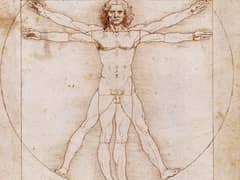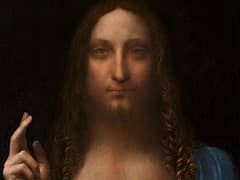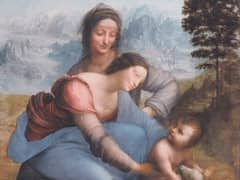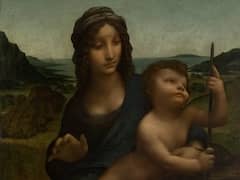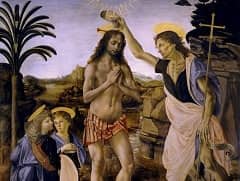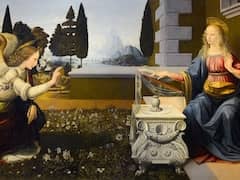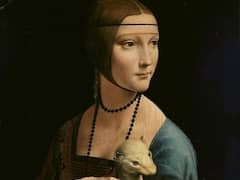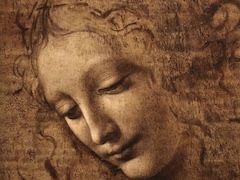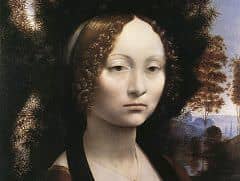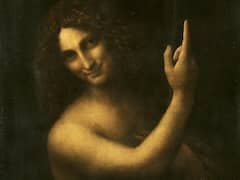The Adoration of the Magi - by Leonardo Da Vinci
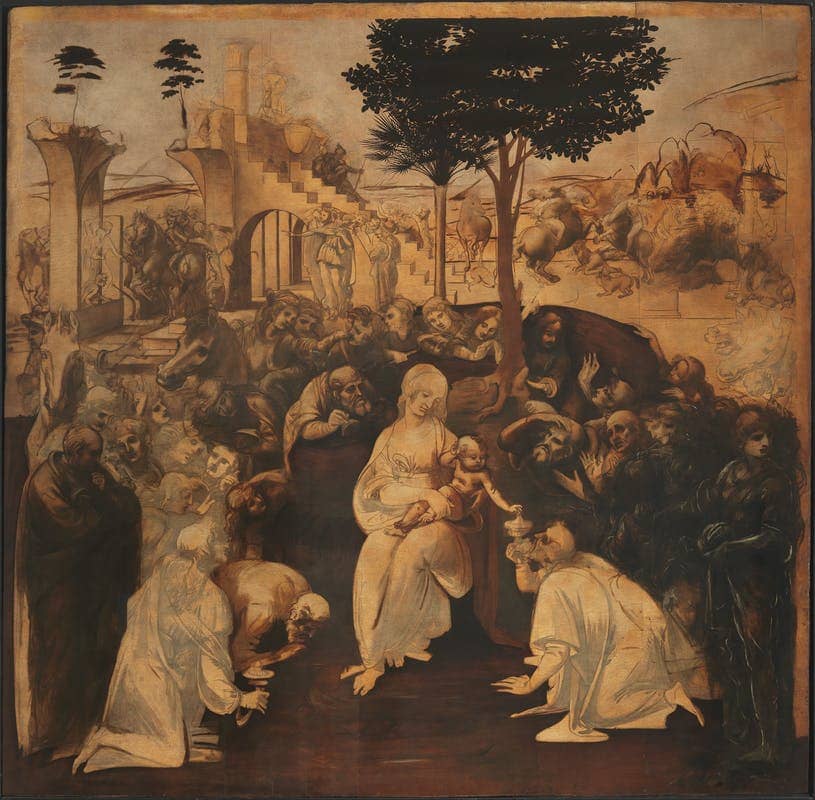
The Adoration of the Magi is an unfinished early painting by Leonardo da Vinci. Leonardo was given the commission by the Augustinian monks of San Donato a Scopeto in Florence, but departed for Milan the following year, leaving the painting unfinished. It has been in the Uffizi Gallery in Florence since 1670.
The Virgin Mary and Child are depicted in the foreground and form a triangular shape with the Magi kneeling in adoration. Behind them is a semicircle of accompanying figures, including what may be a self-portrait of the young Leonardo (on the far right). In the background on the left is the ruin of a pagan building, on which workmen can be seen, apparently repairing it. On the right are men on horseback fighting, and a sketch of a rocky landscape.
The ruins are a possible reference to the Basilica of Maxentius, which, according to Medieval legend, the Romans claimed would stand until a virgin gave birth. It is supposed to have collapsed on the night of Christ's birth (in fact it was not even built until a later date). The ruins dominate a preparatory perspective drawing by Leonardo, which also includes the fighting horsemen. The palm tree in the center has associations with the Virgin Mary, partly due to the phrase 'You are stately as a palm tree' from the Song of Solomon, which is believed to prefigure her. Another aspect of the palm tree can be the usage of the palm tree as a symbol of victory for ancient Rome, whereas in Christianity it is a representation of martyrdom triumph over death so in conclusion, we can say that the palm, in general, represents triumph.
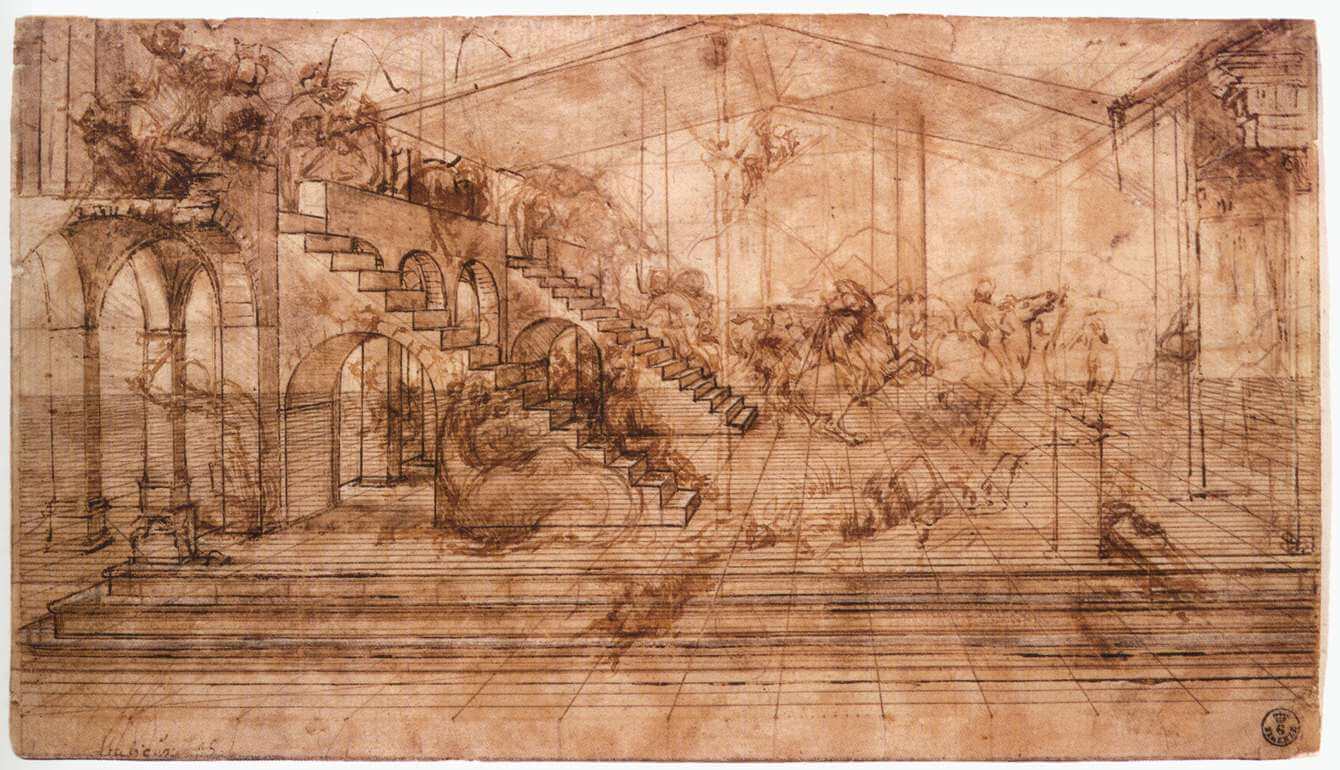
The other tree in the painting is from the carob family, the seeds from the tree are used as a unit of measurement. They measure valuable stones and jewels. This tree and its seeds are associated with crowns suggesting Christ as the king of kings or the Virgin as the future Queen of heaven, also that this is nature's gift to the new born Christ. As with Doni Tondo by Michelangelo, the background is probably supposed to represent the Pagan world supplanted by the Christian world, as inaugurated by the events in the foreground.
The Adoration of the Magi is perhaps one of Leonardo da Vinci's strangest and most fertile compositions. By combining figures of pleading old men and armed horsemen, he transformed a banal biblical subject into a scene from human history. At the same time, he took the technique of non finito to its extreme. The figures and architectural elements boldly delineated and filled out in earth colors on the five boards that make up this panel anticipate the type of sketchwork that will characterize modern art. This picture is remarkable for its extreme concentration and power.
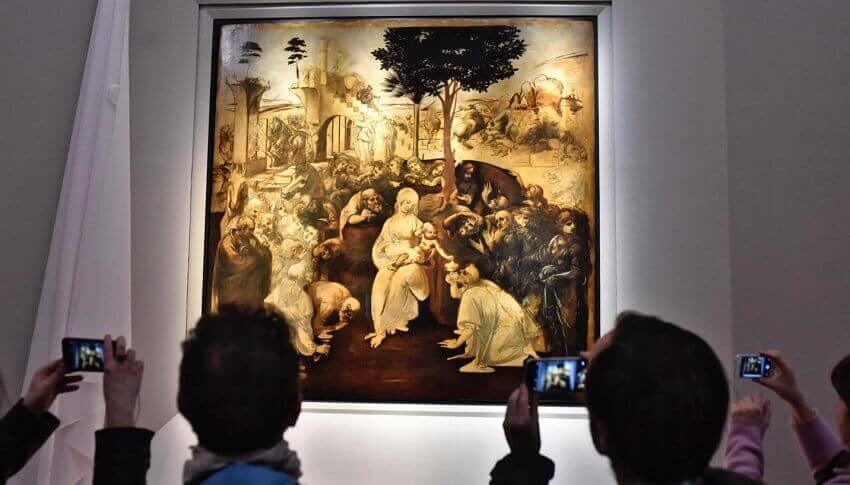
In 2011, The Adoration of the Magi was sent to the restoration which was carried out by a team at the Opificio delle Pietre Dure, a research and conservation institute of the Italian culture ministry. In 2017, masterpiece was emerged cleaner and brighter from its six-year restoration



